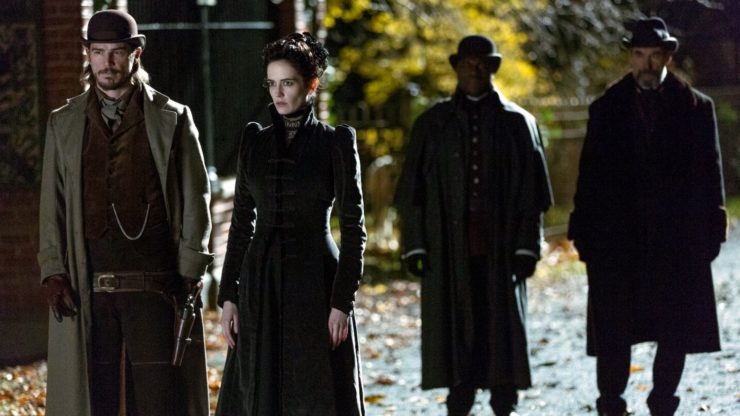I will admit that this has been a daunting article to write. Besides the ennui and dread brought on by the Covid-19 outbreak, I also find myself in the position of trying to do justice to what is, without a shadow of a doubt, my favorite television show ever: Penny Dreadful.
There was a brief shining moment in 2015 when Penny Dreadful, Crazy Ex-Girlfriend, Game of Thrones, and Hannibal were all on TV at the same time and that exists as my own personal high-water mark for “peak TV.” Those seem like halcyon days right now, and Penny Dreadful, whose “spiritual sequel” City of Angels premieres on April 26th, deserves to be lovingly memorialized. And hey, in these days of social distancing, what better time for a (re)watch of a truly outstanding Victorian Gothic drama (either in preparation for the new series or just because it’s an amazing show)?
For those of you who have not yet had the chance to experience the series, a brief description is in order: Penny Dreadful is a three-season fin-de-siècle drama created by prolific screenwriter, John Logan and aired on Showtime and Sky UK. It follows deeply Catholic clairvoyant, Vanessa Ives (played to absolute perfection by Eva Green), retired colonial-African explorer, Sir Malcolm Murray (Timothy Dalton), and American sharpshooter Ethan Chandler (played by Josh Hartnett) in a supernatural mystery that brings them into conflict and connection with a number of famous literary figures from 19thcentury Gothic fiction. This includes Victor Frankenstein, Dorian Gray, Henry Jekyll, and much of the cast of Bram Stoker’s Dracula. The show is thematically concerned with the ramifications of religious faith in an era of secular rule, the meaning of evil, and the difficulties of being a woman in an age of unrestrained patriarchy.
Let me start by saying that I was always baffled by the reception that Penny Dreadful got, both from critics and casual viewers. It was repeatedly snubbed by the awards circuit and received the dubious and baffling nomination for “best campy show” from Fangoria. In my own circle of Victorian-fiction academes, it was especially loathed—a fact I found borderline distressing, given how perfectly it wed Victorian Gothic fiction to the prestige drama format.
I think some of that blowback was a reaction to the name of the show itself. A “penny dreadful” is a Victorian slang term for a lurid piece of sensational or supernatural fiction, often sold, loosely bound, for a penny. Some of our most famous 19th century stories came from penny dreadfuls: the Tale of the Flying Dutchman, Feast of Blood, and Sweeney Todd, to name a few. The subject matter of the show is certainly in line with the content of penny dreadfuls. There are scenes of grotesque gore, unsavory sexual Gordian knots, and frequent engagements with the colonial Victorian (read: racist) misconception of the savageries and mysteries of the non-white world (all things that penny dreadfuls were obsessed with). But the show is tonally nothing like a penny dreadful. It is slow moving, well-written, character-driven and elegiac. It is, in short, not a guilty pleasure. This has, consistently, been the hardest thing to communicate to others as a fan of the series. For one reason or another, people expect a campy, sensationalist show about naughty Victorians fighting monsters, and while that descriptor might technically be accurate, the show will inevitably disappoint people looking for that fix.
So why should you watch Penny Dreadful? There are too many reasons to enumerate here, but I’ll try my best. Two warnings: first, light spoilers lie ahead. Second, the series was cancelled before its fourth and final season (much like HBO’s beloved Deadwood) and had to wrap up the entirety of its plot in a two-hour finale that does its best with the amount of material it needs to cover but ends up being disappointingly fast-paced and giving ignominious short shrift to its single best character. But let us press on with a few of the elements that set the show apart from almost anything else you’ve ever seen, starting with…
Eva Green as Vanessa Ives
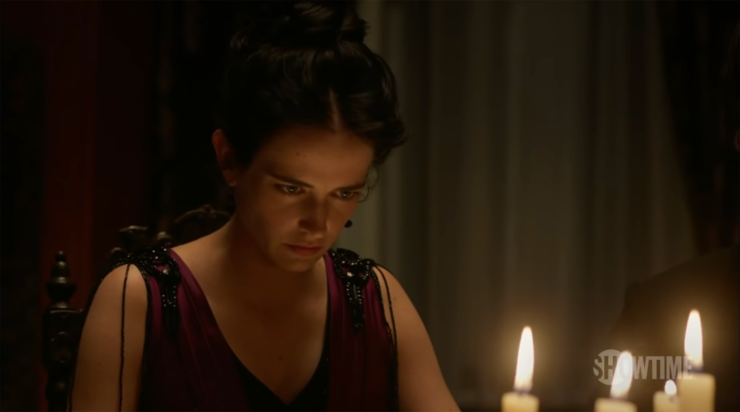
French actress Eva Green is probably best known for her tragi-sultry portrayal of original Bond girl Vesper Lynd, or (unfortunately) as Helena Bonham Carter’s replacement in the role of overused and under-utilized muse for director Tim Burton. But she is a brilliant actor—one that can take exploitative, derivative dreck like 300: Rise of an Empire, and somehow make every scene she’s in unforgettably electric.
But in an ensemble show where it was hard to find a weak link (though we can quibble about late-entrant Perdita Weeks and her under-developed “thanatologist,” Catriona Hartdegen), Eva Green was the undoubted queen. The AV Club put it succinctly in reviewing an episode in the final season, stating:
At least once per season, John Logan and company get together and decide (with all due respect to the excellent ensemble cast), screw it: this week we’re doing The Eva Green Show. And who can blame them? They know what they have in Green as well as we do: a fearless actress who has no time for pedestrian concerns about vanity or what some might consider to be over the top.
And it’s that commitment to a kind of furious hamminess that transcends parody which makes Eva Green so undeniably good. Take, for example, this scene from the second episode of the series. In it, the characters participate in a faux seance meant to conjure a long-dead spiritual guide. Green’s character, Vanessa Ives, is instead possessed by the spirit of Malcolm Murray’s deceased son. She plays it with a kind of frenetic energy, almost (almost) too silly, but so completely committed and vulnerable that she makes it impossible to look away, both for the other characters and for the viewer. She embodies what makes Penny Dreadful great: a masterful balancing act of sincerity and camp that manages to be more rewarding than either could be on its own.
There are three Vanessa-centric flashback episodes throughout the series that track her doomed desire for inner peace, love, and independence. The last of these, 2016’s “A Blade of Grass” (S3, Ep. 4) is essentially a two-person play with her and Rory Kinnear (who plays Frankenstein’s monster in the rest of the series) in which she says next to nothing, acting with pained glances, mumbled words, and overwhelming sorrow against the blank backdrop of an asylum’s padded cell. Green is absolutely phenomenal—one of the great actors of our age—and it is hard to imagine a better stage upon which to display her talents than the one she’s given in Penny Dreadful.
Classic Characters Properly Understood
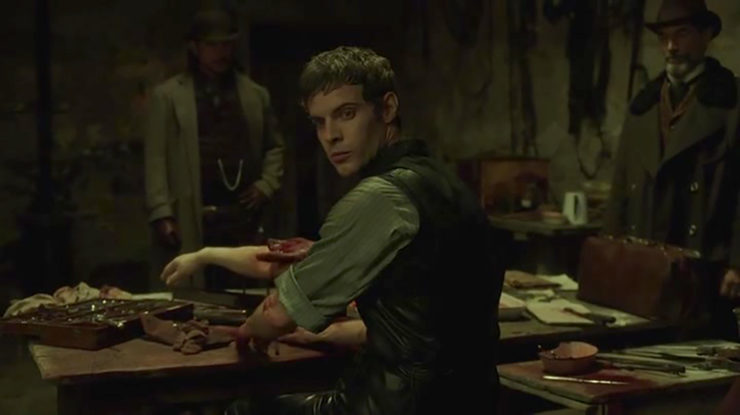
There is no shortage (to my eternal delight) of books, graphic novels, films, and TV shows that are interested in teaming up the great heroes and monsters of Victorian fiction. You can probably trace the phenomenon back to the Universal Studios monsters who were mostly drawn from 19th century fiction, with later highlights such as Kim Newman’s excellent novel Anno Dracula (1992) and Alan Moore’s graphic novel series The League of Extraordinary Gentlemen (1999) serving as strong representations of the subgenre, overall. Penny Dreadful is the apotheosis of this subgenre.
It achieves this through meticulous and careful study of the characters it chooses to follow, always deferring to (and occasionally elevating) the source material when trying to tell new stories. Take, for example, Victor Frankenstein (played by Harry Treadaway, most recently of Star Trek: Picard). Frankenstein is, of course, the creation of Mary Shelley in her Romantic novel of the same name, first published in 1818. Penny Dreadful is set in 1891—seventy-three years after Shelley’s novel. This makes Frankenstein somewhat anachronistic (the majority of other fictional characters who appear are taken from novels written within about ten years of Penny Dreadful’s in-world date). But, rather than simply update the resurrection-obsessed doctor or draw from his Universal Studios portrayal as an electricity-obsessed mad scientist, the show leans into his anachronistic presence. Penny Dreadful’s Victor Frankenstein is overwhelmed by notions of Romanticism and poetic impulses.
In the pilot, Frankenstein speaks about why he is interested in resurrection as a scientific goal, saying, “Life and Death, Sir Malcolm, the flicker that separates one from the other, fast as a bat’s wing, more beautiful than any sonnet […]” to which Timothy Dalton’s Sir Malcolm replies, “You have the soul of a poet, sir.” The series continually reminds us that Frankenstein, though a brilliant scientist when it comes to praxis, has an outdated philosophy of science that puts him at odds with more modern characters like Henry Jekyll (Shazad Latif) and Abraham van Helsing (David Warner) and directly in conversation with the scientific notions of Mary Shelley’s era almost a century prior. It is a brilliant way to reconcile the presence of Frankenstein and also pay homage to show’s capital-R Romantic notions; after all, the series ends with Rory Kinnear—whose Creature names himself after elegiac, pastoral poet John Clare—reciting Wordsworth’s 1807 “Intimations of Immortality.”
But more than just reconciling discrepancies in time period, Penny Dreadful is engaged with correcting more sensational portrayals of well-known characters in order to better meditate on the original versions of these literary creations. Take, for example, the show’s treatment of Dorian Gray (Reeve Carney, who currently stars in Broadway’s Hadestown). There is a persistent and largely incorrect characterization of Dorian Gray in most media. Many portrayals combine the seemingly ageless and immortal dandy with his rakish mentor, Lord Henry. It’s a fun characterization, to be sure: Dorian becomes a nihilistic, hedonistic rake who moves, like a cancer, through the gentry: defiling women, murdering men, and deflecting attacks on his character with a wry sneer. Essentially, he is often portrayed as a monster worthy of his portrait—see, for instance, Stuart Townsend’s portrayal of the aesthete in the mostly lamentable film adaptation of The League of Extraordinary Gentlemen (2003). I’m not denying that Stuart Townsend is everything a human man should be, but it’s not really the novel’s version of Dorian Gray.
In Wilde’s 1891 novel, Dorian is an innocent par excellence. He is distinguished, not by a gleefully corrupt and degenerate nature, but by a naiveté that is, by turns, charming and tragic. His portrait reflects his deeds (which are increasingly dark) but he indulges in vice mainly as means of pleasing the ideals of Lord Henry and his sinister Yellow Book. Dorian isn’t the man your father forbids you to see because he has a dark or troubling reputation, he’s the man your father encourages you to see, only to regret it later.
All of this is to say that Penny Dreadful gets it right. The show’s Dorian is consistently characterized by a lack of understanding of the complexities of the human heart. He seduces and murders and toys with people, but Carney perfectly sells Dorian’s utter non-comprehension of how vile his acts are. Even in his final scene, faced with the revenge of his spurned lover who only spares him because she understands the futility of his death in easing her troubles, Dorian calls after her, “You’ll be back, and I’ll be here. I’ll always be here” as the camera pans away to show him, child-like, dwarfed by a portrait wall, unable to understand that he has ruined his best chance for companionship.
A Steampunk-Free Victoriana
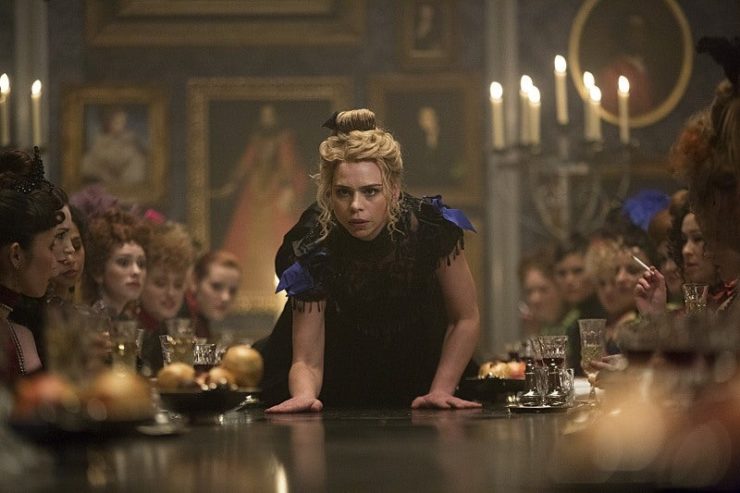
In my article on Amazon’s Carnival Row, I might have overstated my distaste for Steampunk as a genre. I should clarify: I don’t hate Steampunk, but I am frustrated by how much, at its height, it became synonymous with any fantastical form of Victoriana. As steampunk literature scholar Mike Perschon makes clear in some of his lectures, Steampunk is a fundamentally optimistic and meritocratic endeavor that takes the figure of the genius as its center and makes them unflappable so long as they have enough scrap metal to invent with. But the dominant mode of Victorian literature is rather different and much less optimistic, a realism shot through with doubt and a sense of stagnation.
Penny Dreadful is full of the Victorian fascination with uncertainty and malaise. Vanessa Ives battles with the meaning of her Catholic faith weighed against her diabolical birthright. Brona Croft, a consumption-addled sex worker (Billie Piper at her very best), struggles to put her life back together and find edifying meaning after it’s been destroyed, several times over, by both cruel men and the patriarchy generally. Frankenstein’s monster searches for glimmers of humanity in his fellow man, despite having left humanity behind all together. If you are looking for a show that tries to take a measured and thoughtful look at the Victorian era (while also including vampires, werewolves, demons, and the undead), look no further.
A Complicated Legacy on Race
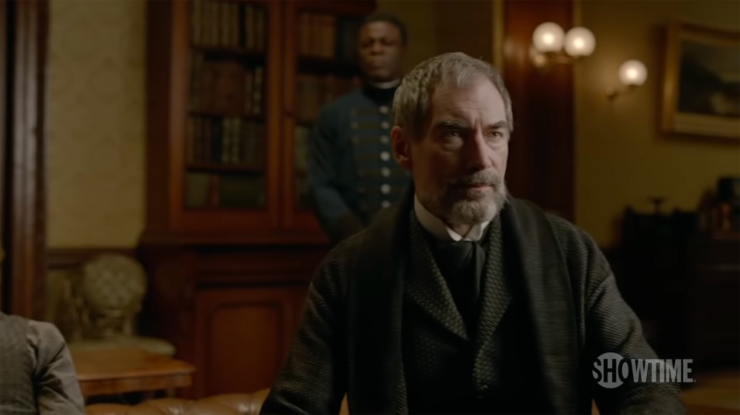
The major shortcoming of Penny Dreadful is its treatment of characters of color. For the first two seasons, the only person of color in the show is Sembene (Danny Sapani), Sir Malcolm’s valet and aide-de-camp who has the tiniest bits of a backstory hinted at, only to have them cut short in a weird moment of uncharacteristic self-sacrifice. It’s a real letdown in a show that is otherwise fantastically conscious of the hideous realities of our century-old past.
It is also surprising, given that the show is otherwise greatly interested in calling out Britain and America’s galling genocides and colonial horrors. Ethan Chandler is positioned as the quintessential American—a rancher, sharpshooter, and ex-cavalryman whose heroics are constantly called out as being in service of the genocide of Indigenous Americans. The series’ third season takes Chandler and others to the American West where manifest destiny is lambasted even more thoroughly through the introduction of Chandler’s father (played with perfect, sly malice by the inimitable Brian Cox) and his Apache mentor (Wes Studi).
Similarly, the show takes on the awful legacy of British India by bringing us a mixed-race Henry Jekyll obsessed with the taming of mankind’s inner savagery as a means of revenge against the white British father who disowned him. At its worst Penny Dreadful sidelines its characters of color to the detriment of the show as a whole. At its best, it uses its white-centric perspective wisely, reckoning with the cruelty of the Anglo-American world without having anachronistically thoughtful, enlightened characters.
Dr. Ferdinand Lyle
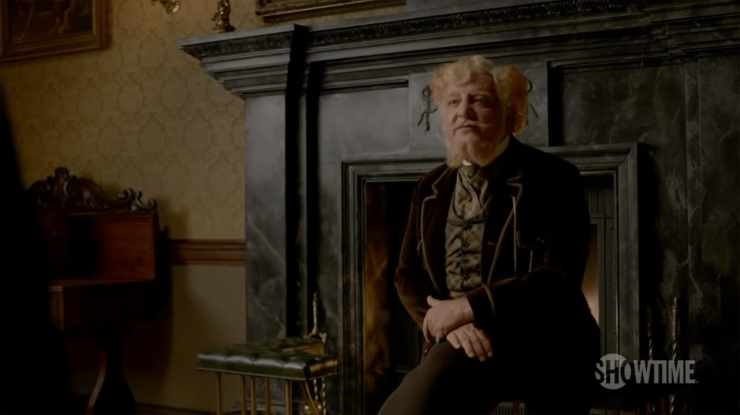
Penny Dreadful’s best kept secret might be Simon Russell Beale, a veteran stage actor who plays queer, fastidious, deliciously flamboyant Egyptologist Ferdinand Lyle. He is, alas, a bit player in the first and third seasons, but is promoted to a regular cast member in the second where Lyle is a delightfully magnetic presence, played occasionally for comic relief but also given the kind of thoughtful, non-kill-your-gays arc that fussy, older queer characters are rarely afforded. Watching Beale joyfully chew the scenery only to suddenly ground a moment in radical tenderness is one of the greatest rewards of watching (and rewatching) the show. That, and the fact that his hair is magnificent.
And That’s Not All…
This is, and can only ever be, a partial encomium for why Penny Dreadful deserves your attention, either as a first-time viewer or as a returning one. I’ve spoken very little about Billie Piper, who does incredible work in a double role that shows off her range (and arguably one of the better fake Irish accents on TV). I haven’t discussed Jonathan McKinstry’s incredible production design, which includes excellent use of the spectacular Dublin Natural History Museum. I haven’t told you that the show regularly includes disorientingly sensual and quotable dialogue, like Vanessa Ives asking if a rare flower is poisonous only to have Dorian Gray respond: “like all beautiful things, I hope so.” I haven’t even mentioned that the third season features Broadway legend Patti LuPone as a genuine action star! There is simply too much to recommend the show—certainly too much for an article-length review.
As we inch closer to the end of April and the premiere of Penny Dreadful: City of Angels, I’m filled with both cautious optimism for a return to John Logan’s terrifying, mournful world (if not the characters I have spent the last year trying to make into custom, handmade Funko Pops) and a sense of dread that it will not live up to the series that preceded it. Even four years after its cancellation, Penny Dreadful continues to my gold standard for what a great speculative fiction drama should look like, and it continues to be impossible to let go of the show’s enduring, fascinating strangeness.
Note: All three seasons of Penny Dreadful are currently streaming on Showtime and Netflix, available on Hulu with the Showtime add-on, available on Amazon Prime with Showtime (30-day free trial) or for purchase, as well as for sale other platforms.
Tyler Dean is a professor of Victorian Gothic Literature. He holds a doctorate from the University of California Irvine and teaches at a handful of Southern California colleges. He is one half of the Lincoln & Welles podcast available on Apple Podcasts or through your favorite podcatcher. More of his writing can be found at his website and his fantastical bestiary can be found on Facebook at @presumptivebestiary.










